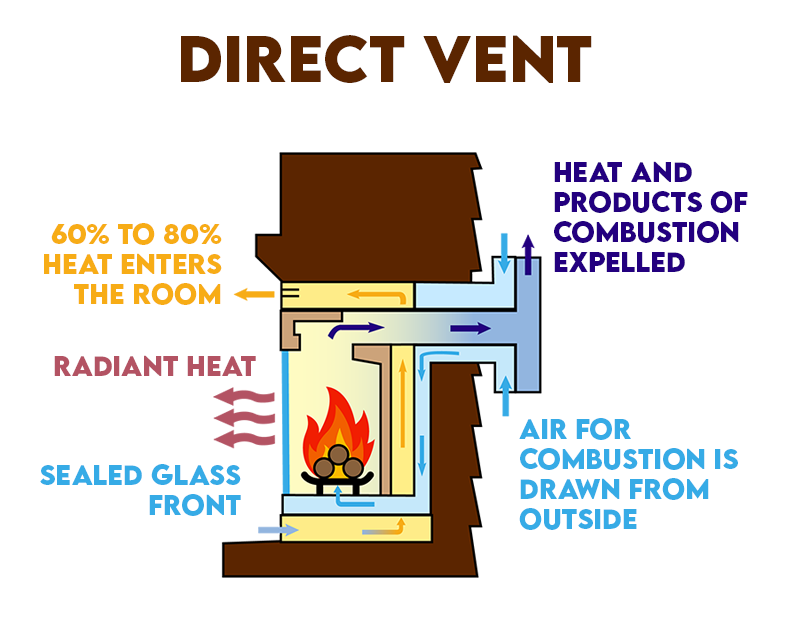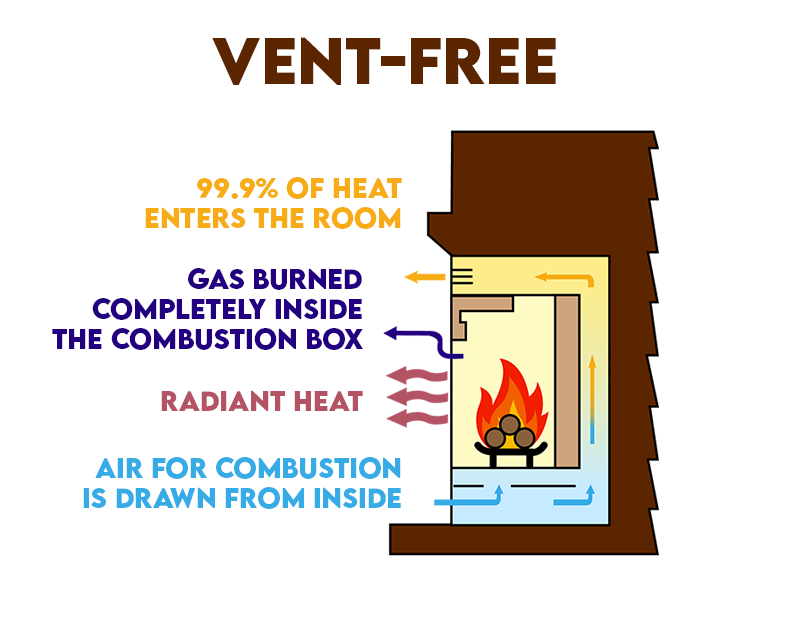Direct Vent vs. Vent-Free Gas Fireplaces: Which is Right for You?
If you want the warmth of a real fire, but do not want the maintenance of a wood burning fireplace, a gas fireplace could be the right choice for your home. There are two options to consider: direct vent gas fireplaces or vent-free gas fireplaces. Continue reading to learn the differences of each and determine which is the best solution for your home.

Direct Vent fireplaces create a warm and alluring focal point without the worry of combustion gases entering your living space. A closed ventilation system with two pipes is used, one to draw in outside air for combustion, while the other removes exhaust out of the home. The firebox front is completely sealed with glass to let the venting process work. A direct vent system is often installed along an outside wall; however, it can also be installed in other areas as long as it can be vented through the roof.
What To Know:
Flame Presentation
If realism and aesthetics are important to you, direct vent fireplaces generally have a more realistic looking flame. Direct vent units are temperature controlled; resulting in a flame that looks closer to one burning wood.
Heat Efficiency Between 60% to 80%!
Because the vent is connected outside of the house, the fireplace can use outdoor air for combustion. Since the fireplace has a glass front, this combustion takes place inside a sealed chamber. Room air circulates around the combustion chamber, often (but not always) assisted by a blower, to heat the room. This allows for a solid heat output with thermal transfer through the glass and air circulation.
Room Air Separated From Combustion Air
A direct vent unit brings in air from outside and then exhausts the gases back outside. Because of the design of direct vent fireplaces (a glass panel is used to separate the burning area from the inside of your home), the indoor air quality will not be affected.

Ventless (or vent-free) gas fireplaces are efficient and provide supplemental heat for your room without the typical expenses of a traditional fireplace installation. Since ventilation is not required, the heat generated stays inside the room; this also means you have a lot more flexibility with where it can be installed. Ventless fireplaces function by bringing in air from inside the room and exhausting it as heat. They burn at 99.9% efficiency to prevent combustion gases remaining to come into the room. Vent-free systems have an unmatched safety record due to the the clean burning technology and their oxygen depletion sensor, which automatically shuts off the gas valve if the oxygen in the room drops to an unsafe level. Vent-free units are limited to 40,000 BTUs and must be operated as a supplemental heating source.
What To Know:
Installation Versatility
Since these fireplaces do not need to vent the air outside, this gives a lot more options on where the vent-free unit can be installed in your home. Not having to connect to an exterior wall means that these can be placed in a lot of places you might otherwise have not had available with a traditional fireplace.
Heat Efficiency of 99.9%!
Because the air vapors are vented back into the home instead of outside, vent-free fireplaces are very efficient at heating up a room fully and quickly.
Some Placement Restrictions
In certain circumstances, these units may have a minimum clearance that must be met for installation. For example, wood mantels and other combustible items must be a certain distance away from the fireplace. See our Operating Information page for more placement requirements.
Let Us Help You Decide:
Come see us at your nearest Showroom and one of our Customer Service Specialists will be glad to help you determine which option will work best for your home!



